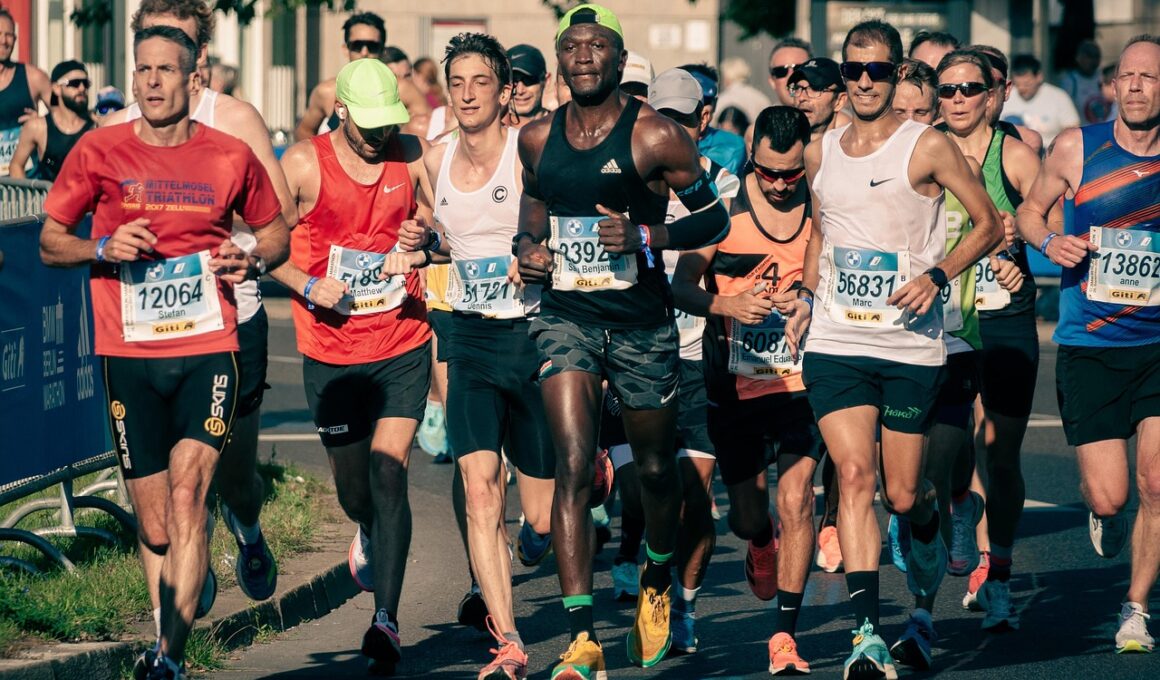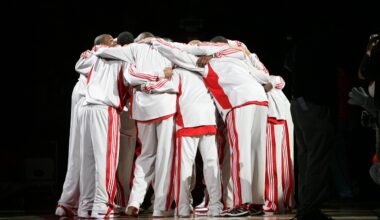Debunking Myths About Age and Fitness Competition
Age is often viewed as a restrictive factor in competitive fitness, leading many to believe that older individuals cannot compete effectively. However, the truth is quite the opposite. Many Masters athletes demonstrate exceptional fitness levels and inspire countless others to engage in physical activity. The notion that older athletes lack the ability to compete should be debunked as false. These athletes more than prove that age can be surpassed by determination and dedication. Strength, endurance, and skill can continue to develop with age. Many Masters competitors showcase extraordinary talents, proving that age can enhance rather than hinder an athlete’s performance. Knowledge and experience accumulated over time can contribute to strategic training decisions. Embracing age as an asset provides motivational reasons for competing. Organizations often encourage participation in Masters competitions due to the growing interest in fitness among older individuals. Communities actively support these athletes, offering resources and camaraderie that further fuels their passion for fitness. Through true dedication, Masters athletes defy stereotypes, showing that age is merely a number. Their achievements inspire a new generation of fitness enthusiasts to continue competing and embracing their athletic journeys.
Beyond physical capabilities, there are misconceptions surrounding injury risk in older athletes. A widespread belief is that older competitors are more prone to serious injuries, but evidence suggests otherwise. Masters athletes are often well-prepared and educated in injury prevention strategies. With age, many individuals develop a deeper understanding of their bodies and understand how to push themselves safely, effectively managing recovery times. Most seasoned competitors have been exposed to various training methods and nutrition plans throughout their careers, which significantly enhances their knowledge about maintaining peak performance. Furthermore, many older athletes invest in professional coaching and physical therapy, which helps minimize injury risks dramatically. Masters athletes prioritize their wellness and fitness education, leading to healthier habits that support sustained physical activity over the years. Commitment to proper warm-ups, stretching, and nutrition reduces injury occurrences as well. The importance of listening to one’s body is also emphasized among older athletes. Overall, what may seem like a disadvantage is often the most significant strength, with the potential to maintain health and fitness goals long after traditional competitors have retired. These factors combined indicate that age does not correlate directly to increased injury rates in competitive fitness.
The Role of Community in Masters Competitions
Another myth surrounding age in fitness competition is the concept of isolation. Some believe older competitors may feel disconnected from younger participants; however, that could not be further from the truth. The fitness community surrounding Masters competitions is welcoming, supportive, and encouraging. Older athletes often find profound camaraderie and shared experiences through participation, forming bonds with fellow competitors across various age groups. These athletes recognize that they bring unique perspectives and valuable contributions to sporting events by sharing insights and strategies developed over years. Connections forged in the pursuit of fitness transcend age barriers, creating a harmonious atmosphere in competitions. Many Masters competitions celebrate diversity among participants by recognizing achievements at all competitive levels, further breaking down stereotypes regarding age and ability. Events are often designed to ensure inclusion, allowing everyone to participate regardless of age. Moreover, social events surrounding competitions reinforce connections among participants. Community-building fosters motivation in pursuing fitness goals, transforming the experience into something greater than merely competing. Thus, the falsely perceived notion of isolation in Masters competitions is replaced by community empowerment, showcasing the unity in age diversity.
Training methodologies tailored specifically for older athletes are essential in debunking misconceptions. As individuals age, their bodies require adjustments to training regimens. Masters athletes often utilize several innovative training techniques that optimize their performance while minimizing wear on their bodies. This adaptability is often overlooked when discussing age in competitive fitness. Older competitors usually prioritize strength training, flexibility, and recovery strategies for improved performance. Proper recovery allows for peak physical conditioning over the long term instead of succumbing to wear and tear often seen with younger athletes. Various modalities, such as yoga or Pilates, have become popular within this demographic, aiding in flexibility and core strength, directly impacting overall athletic performance. Additionally, some athletes incorporate cross-training to prevent plateaus effectively while maintaining cardiovascular fitness and strength. Balanced nutrition becomes a focus as well, incorporating age-appropriate adjustments that accommodate any dietary restrictions or metabolic considerations. Masters athletes often understand that success in competition involves more than merely lifting weights or running laps. Embracing specialized training methods showcases how older athletes can defy stereotypes and perform exceptionally in fitness competitions, breaking the barriers that age often presents.
Challenging Perceptions of Fitness Age Limits
Myths about fitness competitions often extend to perceptions regarding age limits. Many assume that after a certain age, competitive fitness is unattainable. This idea must be challenged as modern fitness culture continuously evolves. Masters divisions allow athletes to compete against peers while celebrating their achievements and efforts. These divisions encourage older athletes, showing that there are opportunities available for competition at any age. Competitors can set personal records and celebrate accomplishments reflective of their dedication, regardless of arbitrary age limits based on misconceptions. The excitement surrounding Masters competitions continually grows, encouraging more individuals to participate in fitness activities. Such events often include categories that cater specifically to different age groups, promoting inclusivity and allowing athletes to shine despite their age. More than ever, individuals witness older athletes achieving successes in various fitness arenas. Breaking the mold regarding age and athletic ability inspires future generations to pursue healthier lifestyles that incorporate fitness and competition seamlessly. Ultimately, age does not determine one’s value as an athlete; rather, it reveals resilience, determination, and the power of dedication to individual wellness and fitness goals.
While on the topic of fitness competitions, it is critical to address nutrition’s significant role in aiding Masters athletes’ performance. Fueling the body correctly is essential for success in any athletic endeavor. With age, dietary needs evolve, necessitating specific provisions to match physical demands. Masters athletes often emphasize balanced diets tailored to address their bodies’ unique requirements. Protein intake, hydration levels, and vitamin supplementation often become key focus areas for older competitors. Understanding how different foods influence energy levels, recovery, and muscle maintenance is critical for maximized performance. Furthermore, many Masters athletes make an effort to remain informed about nutritional science to adapt their eating habits as they age. Learning about the latest research surrounding diet allows them to enhance their routines effectively. Various nutrition plans can be integrated into competitive training cycles, ensuring maximum output during events. Furthermore, collaboration with nutritionists provides personalized diet recommendations, contributing significantly to performance enhancement and overall well-being. Ultimately, proper nutrition plays a sizeable role in debunking age-related myths in fitness competitions and directly influences success in achieving set goals while competing.
Final Thoughts
In conclusion, age should not deter anyone from pursuing their fitness ambitions and engaging in competitive activities. The myths surrounding age and fitness competition, including isolation, injury risk, and performance limitations, must be dismantled. Older athletes display incredible dedication, forming strong connections within a vibrant community that fosters ongoing growth and success. With innovative training methodologies, increased camaraderie, and tailored nutritional strategies, Masters athletes prove that age can indeed enhance athletic performance rather than constrain it. It is essential to redefine fitness competition as an inclusive pursuit that transcends age limits. By embracing positive attitudes, these remarkable athletes inspire others to recognize their potential and capability at any stage of life. Therefore, aspiring athletes should feel encouraged to pursue their fitness goals vigorously, regardless of age or preconceived barriers. Everyone has the chance to celebrate their unique journey and share incredible stories of resilience, grit, and determination. Fitness competitions await anyone willing to challenge these stereotypes and embrace their rightful place in the sporting world. Let’s collectively continue to debunk these myths and encourage a more inclusive narrative surrounding fitness and age.
This final note reveals that the journey of challenging age-related misconceptions regarding fitness competitions is far from over. Discussions about age and athletics will persist as society evolves, and these issues require constant reevaluation. As individuals continue finding strength in community, embracing innovative training methods, and prioritizing nutrition, they will foster a culture that champions inclusivity and celebrates diversity. Education plays a crucial role in shaping perspectives to challenge myths about aging and competitiveness. When athletes share their journeys, they paint a richer picture of what it means to be a Masters athlete. Contributions from all ages will strengthen the narrative that fitness competitions are for everyone, irrespective of the eventual age ranges. Athletes who inspire others to pursue their passions, regardless of time constraints or age barriers, deserve recognition. Community organizations must assist in emphasizing age as one component rather than a deterministic factor regarding success. Raising awareness about the realities of age in fitness will continue to empower individuals to shatter expectations and achieve remarkable feats, pushing boundaries that may have once felt insurmountable. Let’s join in, support each other, and empower the athletic community as a whole towards embracing every age group in pursuit of fitness excellence.


